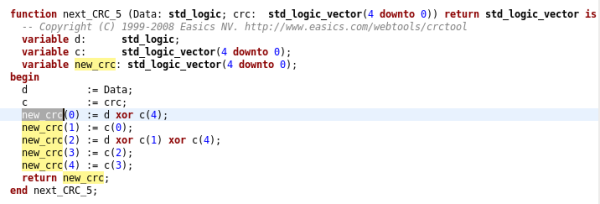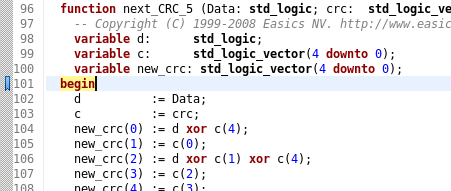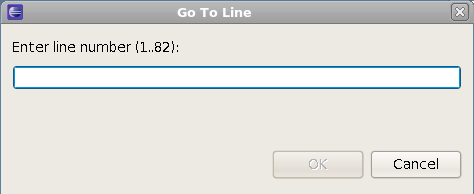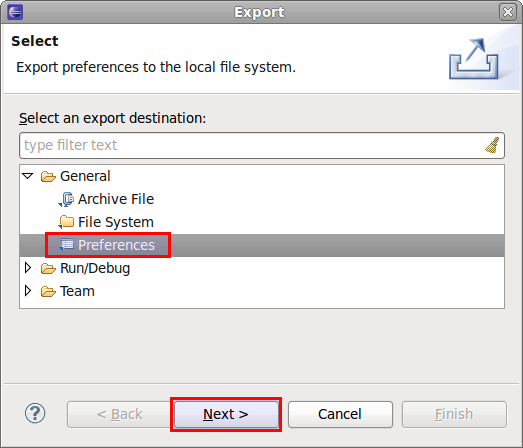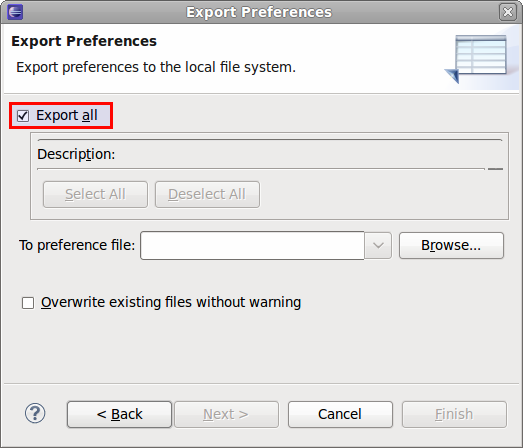Tips and Tricks
The following tips and tricks give some helpful ideas for increasing your productivity.
Editing
Content assist |
Content assist provides you with a list of suggested completions for partially entered text. In the editor press Ctrl+Space. 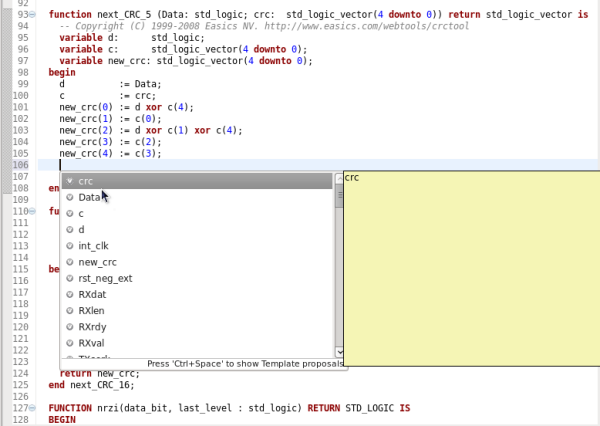
|
Component Automatic Instantiation |
You need to type the first letters of the component (entity, component, configuration) name, then press Ctrl+Space three (3) times. 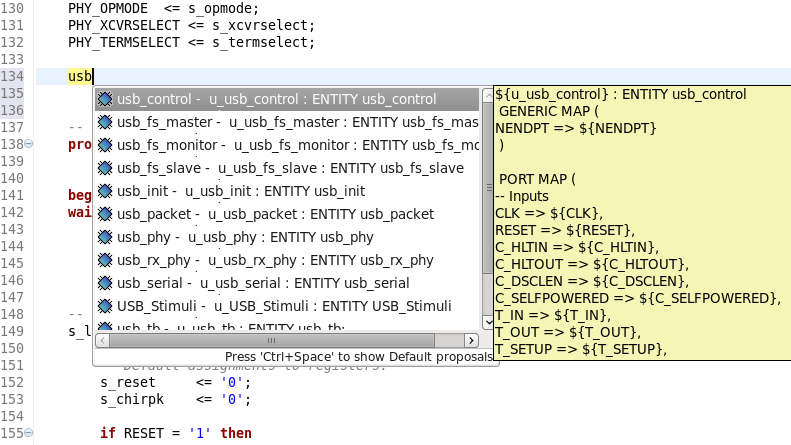
|
Matching begin - end |
If you double click on/after architecture – end, function – end, etc. the block is highlighted. 
|
Toggle Comment |
You can toggle comment on/off for the current line or the selected lines. Press Ctrl+/ or use the action from the drop down menu on right click in editor. 
|
Expand/Restore Selection |
Press Shift+Alt+Up Arrow to incrementally expand the current selection. For example when the cursor is on a word, select the word. Press again to select the whole line. Then, each of the nested enclosing scopes is selected, for example Press Shift+Alt+Down Arrow to restore the previous selection step made with Shift+Alt+Up Arrow |
Format source |
Use the action from the right click menu in the editor. The whole file is formatted or the current selection, if any. |
One key indentation |
If you press Tab once at the beginning of a line, it is automatically aligned to the enclosing context. Press twice to insert a tab. |
Reminders (TODO markers) |
When you tag a comment in source code with TODO, a corresponding tasks is automatically created as a reminder. From the Tasks View, double click on the task takes you to the TODO in the code. Same for for FIXME (higher priority) and XXX (lower priority) markers. You can also add your own tags, see the Reminders (TODO Markers) section of the documentation. 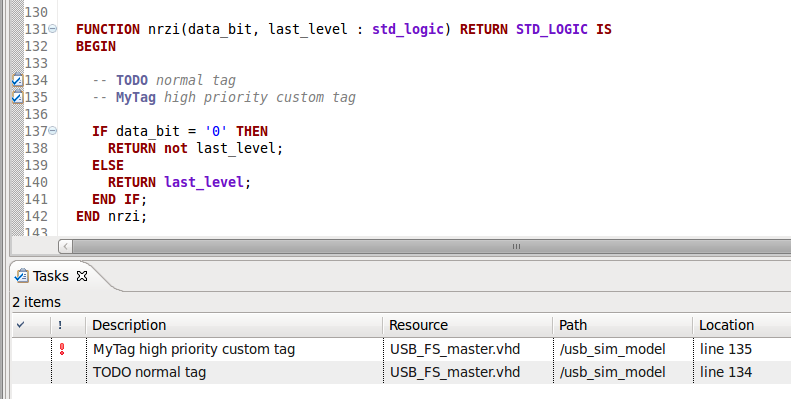
|
Spell checking |
You can enable spell-checking support from the preference page. Spelling errors are displayed in the VHDL Language editor and corresponding Quick Fixes are available. 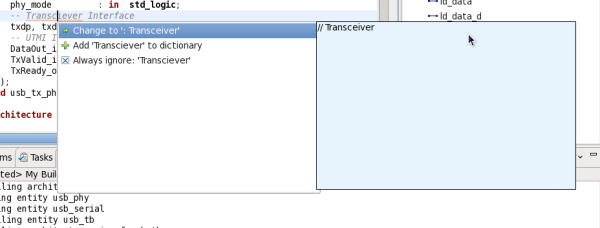
|
Folding |
You can fold code sections to improve read-ability. This is how a folded file looks like: 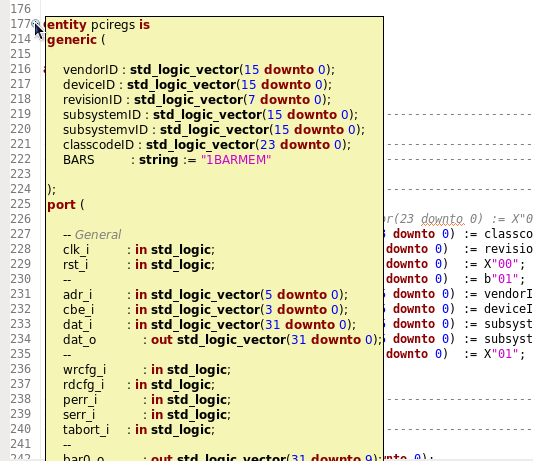
Folding actions (to expand or collapse) are available in the toolbar
When you type on a folded line, it is automatically expanded. You may see the folded code in a tooltip if you move with the mouse over the + sign. |
Folding custom areas |
You can define custom folding areas using comments to indicate the start and the end of the area: 
|
Maximize editor |
Double-click on the editor tab to maximize editor to full window. Double-click again to restore. |
Show line numbers |
Check Show line numbers from the preference page |
Local history |
Whenever you edit a file, its previous contents are kept in the local history. Right click in the editor and chose . 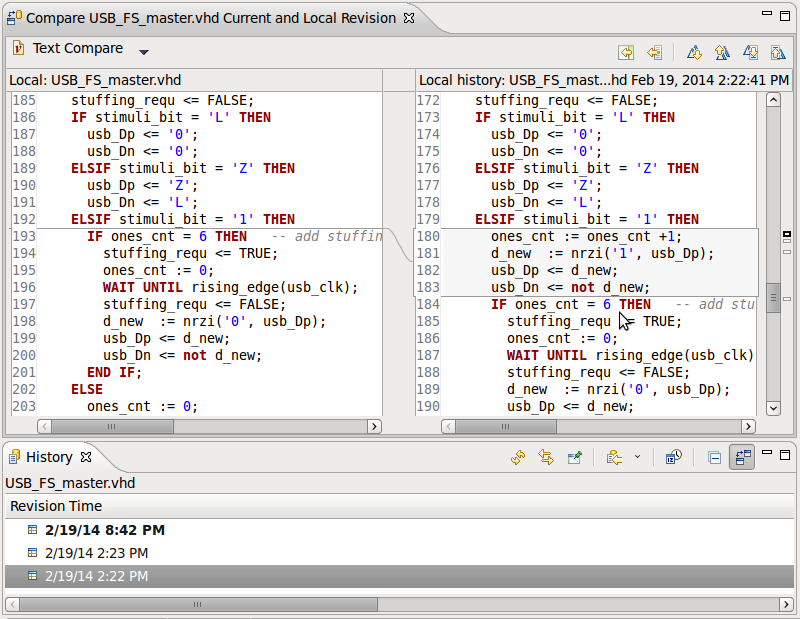
|
Open file in more editors |
To open multiple editors for the same file you should first open the file then right click on the editor’s titlebar and select New Editor 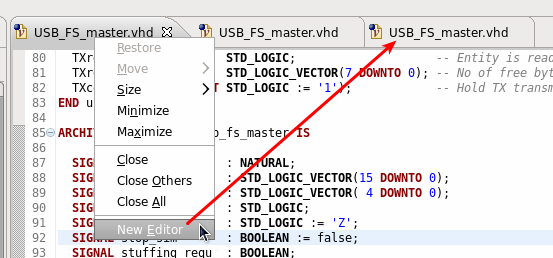
|
Split the editor view |
To open multiple editors side by side follow these steps:
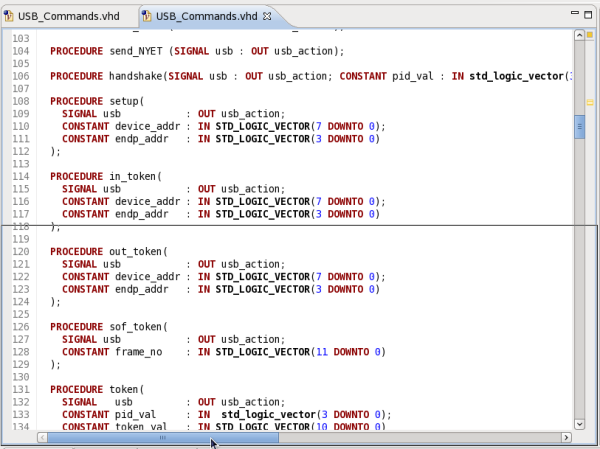
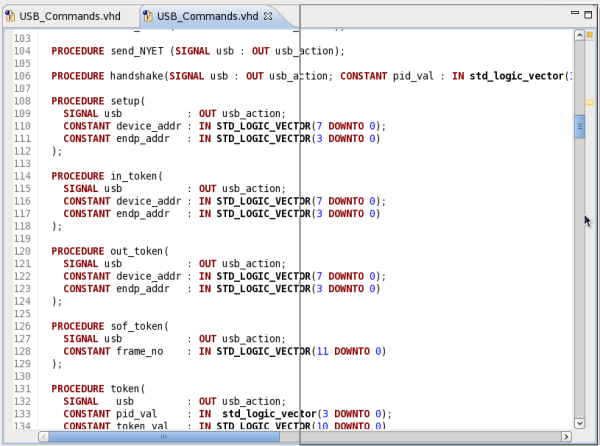
|
Column selection |
You can switch to and from column (block) selection mode either by clicking on the “Toggle Block Selection Mode” button in the toolbar, or by using the Shift+Alt+A shortcut key. 
|
Searching
Search for task. function, field etc. |
To search for the declaration of a specific type, method, field etc.:
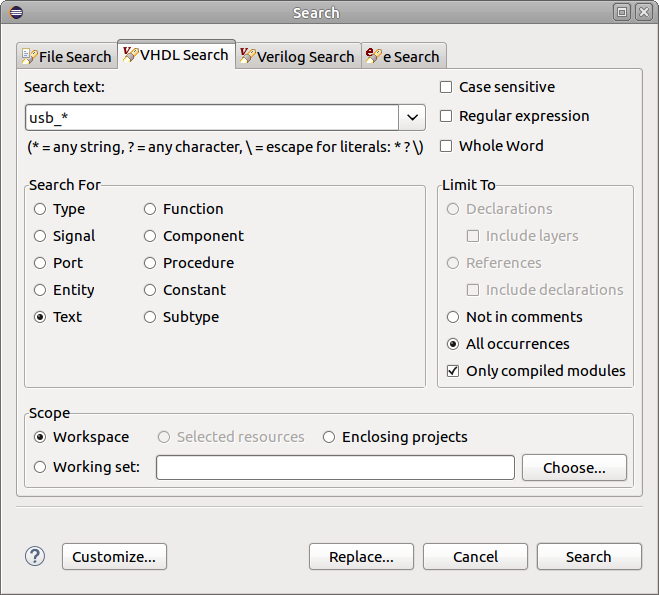
|
Search for references |
To search where a method (or field etc.) is used, hold Ctrl, hover over its name and select Show Usages or right click on its name > Show > Usages or right click on its name > References > Project. The results are presented in the Search View. You can also search for references from the Search Dialog (Ctrl+H). 
|
Search for whole word |
To search for a whole word in all files, in comments or not:
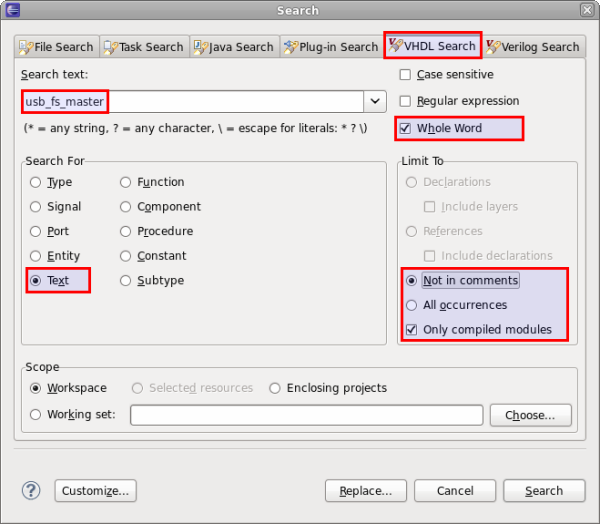
|
Miscellaneous
All shortcuts |
Press Ctrl+Shift+L to see all shortcuts. 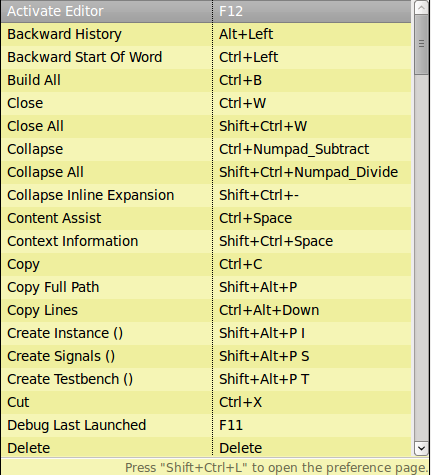
|
Project Properties |
Select the project in the Navigator View, right click and choose Properties. Or from menu . 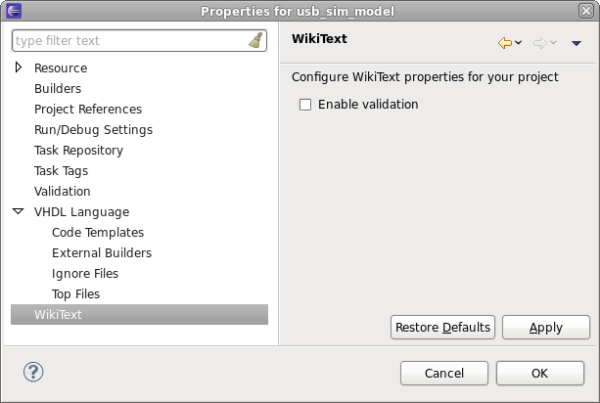
|
System Variables and -f Support |
See: Build Configurations |
Generic launch (make, scripts etc.) |
You can launch external scripts:
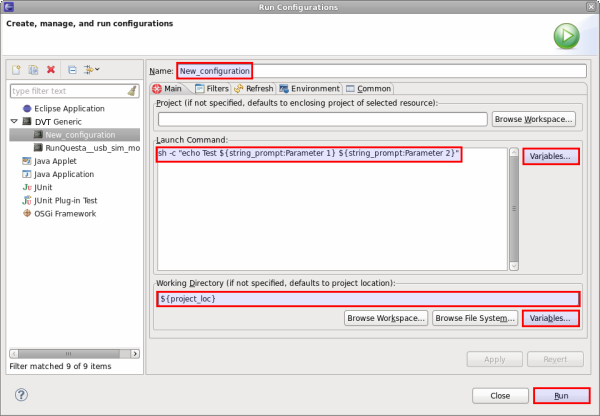
|
Open terminal |
You can open a fully working command-line terminal inside of DVT: In the Navigator View right-click on the desired location and select Open Terminal Here |
External Builders |
An external builder allows you to invoke any script/tool and back-annotate its output (errors, warnings etc.) to the source code. Practically it allows you to connect any 3rd party tool (compiler, linter etc.) to DVT error signaling engines.You can configure one or more external builders on a project:
|
Mapping Linux to Windows |
Linux directories can be mapped to Windows drives in order to access them from Windows. For example /home/simi is mapped to Z:.
This has an impact on paths configured for a DVT project. The paths are set using Linux conventions, however Eclipse runs in Windows and the DVT builder needs to know about the mapping in order to compile the files.
To specify the mapping, set the system variable %DVT_CROSSPLATFORM_MAP% before invoking Eclipse. You can add multiple mappings separated by “;” e.g.: /projects/=p:;/home/lars/=Z:lars
|
Recover from abnormal inconsistencies |
In the event of unexpected behavior (missing results in search, types in type browsing, hyperlinks, tooltips etc.) please manually trigger a clean build from menu Project > Clean…. |
Add a new file extension to compile list extensions |
Go to , select a category from the list (for example VHDL Source File) then click on Add and then on Ok. 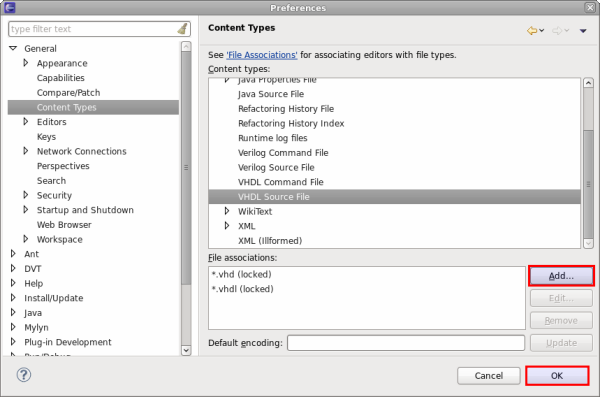
|
Sharing workspace settings |
Export all Workspace/ Eclipse customization:
|
Using System Varibles in Linked Resources |
You can use System Variables in the path of linked resources. For example |
Waive problems reported by DVT |
You can use Compile Waivers to promote, demote or disable the problems reported by DVT. To quickly create a new waiver, in the Problems View right click on any problem reported by DVT and waive it. DVT proposes some default values for the waiver description, path and message. You can easily change them to fine-tune the waiver. To quickly start up a new waivers file click on the Edit waivers button in the Problems View. The .dvt/waivers.xml is created with a default content and opened. You can easily create your own waivers from the default generated ones. In the waivers editor you can use autocomplete for tags, attributes and attribute values. |
Open a file in DVT from the terminal |
You can use the Command Line Interface like this: The command can be shortened by defining this alias in your ~/.cshrc: or by defining this function in your ~/.bashrc: Then the command gets much shorter: |
 or on right click in the editor. You may also use the + or - signs on the left side of the editor.
or on right click in the editor. You may also use the + or - signs on the left side of the editor.

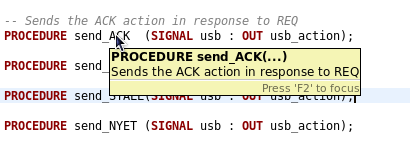


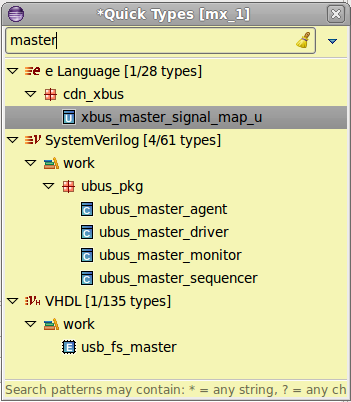
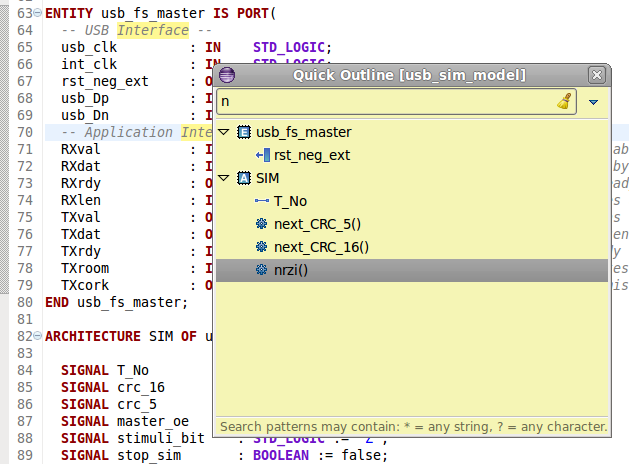
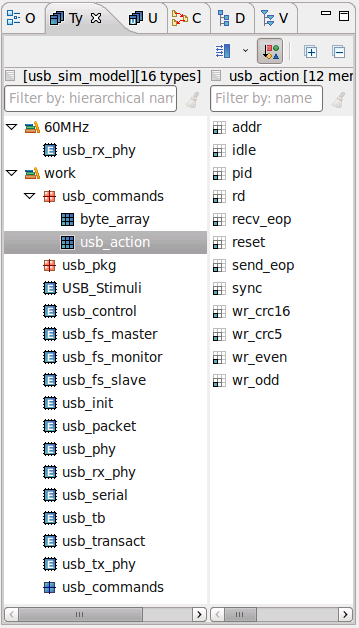
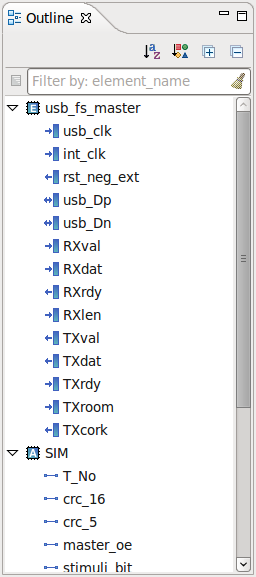
 or press Alt+Shift+O.
or press Alt+Shift+O.